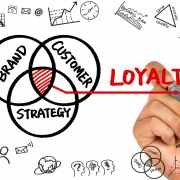BARE Shares – The 6 Disciplines Behind Consistently Great Customer Experiences
Consistently offering great customer experiences is easily a simple idea, but also very difficult to implement. It’s not just a step-by-step process that companies need; there are discplines they’ll need to embody to be effective. BARE shares an article by Swapnil Pardeshi of Gripel Trainings on the 6 Disciplines Behind Consistently Great Customer Experiences.
‘If you think memorable and positive customer experiences just come together without thought or strategy, think again. Then use these standard practices to make it happen, every time.
Mature companies routinely perform a set of sound, standard practices that result in a high-quality outcome. It’s true for manufacturers—they don’t get up in the morning and start pondering how they’ll produce high-quality widgets that day. Similarly, retailers have practices for keeping their supply chains flowing and their shelves stocked, and media companies have practices for getting the news online and into print. That’s how grown-ups do business.
Companies that want to produce a high-quality customer experience also need to routinely perform a set of sound, standard practices. These practices fall under six high-level disciplines: strategy, customer understanding, design, measurement, governance, and culture.
1. STRATEGY
The strategy discipline is your game plan. It’s a set of practices for crafting a customer experience strategy, aligning it with the company’s overall strategy and brand attributes, and then sharing that strategy with employees to guide decision-making and prioritization across the organization.
The customer experience strategy defines the intended experience.
For example, the experience at Costco—a warehouse store in the United States where customers push giant carts through huge aisles stacked high with value-priced products—is very different from the experience at an Apple store, where customers see a comparatively sparse selection of pricey products and get expert assistance with picking the right one. Costco’s experience aligns with its overall strategy as a cost leader; Apple’s aligns with its strategy of innovation.
The strategy discipline is critical because it provides the blueprint for the experience you design, deliver, manage, and measure. Without it, you, your employees, and your partners won’t know whether to deliver an experience like the one at Costco, at Apple, or somewhere else entirely. Worse, you could deliver a Frankenstein experience of mismatched parts, like putting an Apple genius bar in the middle of a Costco store where customers wouldn’t care about it but would worry that prices were going up to pay for it.
2. CUSTOMER UNDERSTANDING
The customer understanding discipline is a set of practices that create a consistent shared understanding of who customers are, what they want and need, and how they perceive the interactions they’re having with your company today. In other words, it’s the thing that replaces everyone’s best guesses about customers with real, actionable insights about customers.
The customer understanding discipline is bedrock. Without this level of insight, you’re liable to frustrate and annoy your customers with your well-intentioned efforts to serve them. When Geek Squad, the U.S.-based computer services company, interacts with its customers, it deals with them differently, depending on which customer archetype they correspond to. A customer could be “Jill,” a suburban mom who uses her computer and other information technology daily. To her, technology is like plumbing and Geek Squad is like a plumbing company that she calls when she wants a leak fixed.
However, a Geek Squad customer could also be “Daryl,” who loves getting his hands dirty but sometimes gets into trouble when one of his tech projects goes awry. Trying to engage a Jill in the same way as a Daryl would be disastrous. When Geek Squad is at Daryl’s house he enjoys chatting about the gory details of the latest innovations, a conversation that would bore Jill senseless.
3. DESIGN
The practices in the design discipline help organizations envision and then implement customer interactions that meet or exceed customer needs. It spans the complex systems of people, products, interfaces, services, and spaces that your customers encounter in retail locations, over the phone, or through digital media like websites and mobile apps.
Design weeds out bad ideas early and focuses your customer experience efforts on changes that really matter to customers.
By leveraging expertise and ideas from customers, employees, and partners, it encourages creative solutions—and helps avoid missteps by grounding those solutions in reality.
To envision and define the store experience his customers want to have, Office Depot built a “planogram lab”—a prototype store in a nondescript office complex near company headquarters in south Florida. That lets CEO Kevin Peters bring in customers to help design the shopping experience that’s just right for them, and then test those designs out on other customers. Everything from the amount of floor space to where products appear on shelves to where employees stand when they stock those shelves was designed from the ground up.
4. MEASUREMENT
The measurement discipline is a set of practices that let organizations quantify customer experience quality in a consistent manner across the enterprise and deliver actionable insights to employees and partners.
This is how you put customer-experience metrics on par with traditional-business metrics, such as sales and profitability.
The customer experience team at technology giant EMC has a sophisticated measurement framework. It first identifies the aspects of the customer experience that drive the most loyalty, like ease of doing business. It then prioritizes those drivers based on customers’ satisfaction with each driver and the impact of each driver on the overall experience. That tells EMC which things to fix immediately, which to improve over time, which to maintain at current levels, and which to promote as strengths.
5. GOVERNANCE
The customer experience governance discipline is a set of practices that help organizations manage customer experience in a proactive and disciplined way. If your customer experience strategy is your game plan, then the governance discipline supplies your referees and your rule book. It does this through a mix of assigning responsibilities and changing business processes.
The governance practice is essential because it holds people accountable for their role in the customer experience ecosystem and helps keep bad experiences from getting out the door. It also gives a boost to initiatives that improve customer experience.
Processes help force customer experience concerns into the mix when making day-to-day business decisions. For example, Canada Post requires all funding requests from any department to answer 10 customer-focused questions in the business case. This ensures that all leaders think not just about how their projects will affect the bottom line, but also about how they’ll impact the customer experience.
6. CULTURE
The culture discipline consists of practices that create a system of shared values and behaviors that focus employees on delivering a great customer experience. You might think of it as the way you shape what your employees do when you’re not in the room.
The culture discipline is perhaps the most powerful of all the disciplines because it embeds practices from the other five disciplines into employee DNA.
Companies like Disney, Zappos, Southwest Airlines, Ritz-Carlton, and FedEx all point to their customer-centric cultures as key to their success. That’s because this discipline turns customer experience excellence into a habit and makes future change easier by creating an ecosystem that’s receptive to customer experience improvement efforts.
IT’S COMMITMENT TIME
This is the age of the customer. You’re not going to succeed through manufacturing strength, distribution power, or information mastery—those have all been commoditized. If you want to succeed, you have to roll up your sleeves and do the work of building competence in these six disciplines. That may scare you. But what should scare you more is the thought of becoming irrelevant to your customers, which is what will happen if you don’t take action.’
BARE International was born from the need for mystery customer research at the national and global level. You can and should, see your business through your customers’ eyes. BARE’s customer experience research can provide you with critical data to make meaningful business decisions. Ask us how.
Read the full article at the source here.
Customer Experience Research & Insights by BARE International
Your business challenges are unique. Our proven success across industry categories stems from asking the right questions to help you address the challenges you face everyday. Each solution we offer is customized to meet your needs, providing actionable feedback to help you make critical business decisions. We treat you the way you want to treat your own customers, providing a dedicated project team to give you the attention you deserve and an infrastructure spanning the globe to provide the resources you need to understand your customers’ experiences.
- Customized Research Solutions
- Immediate, Actionable Feedback
- Dedicated Project Team
- Family-Owned, Global Capabilities
Get in touch today to receive a complimentary evaluation of your business. We look forward to working with you.











